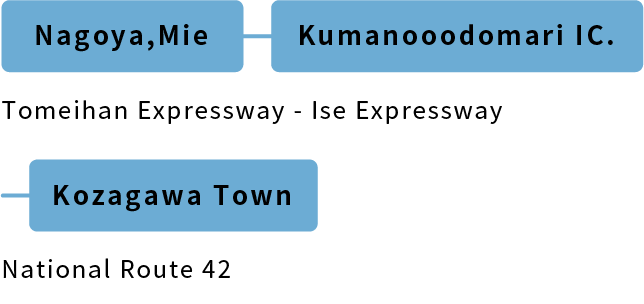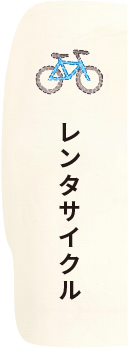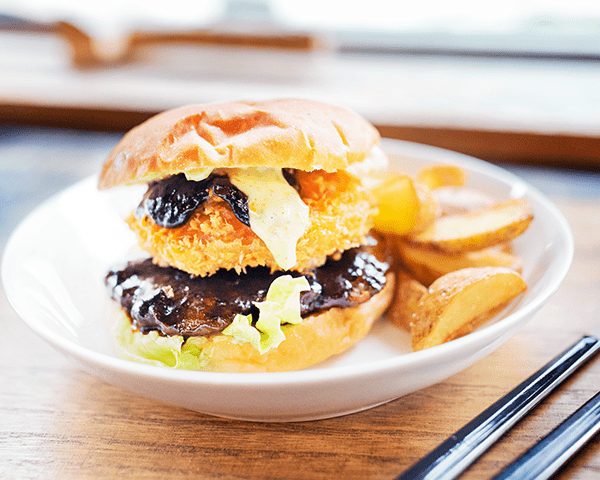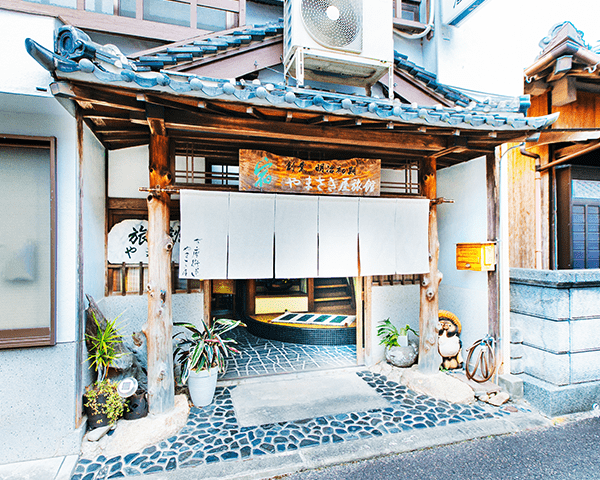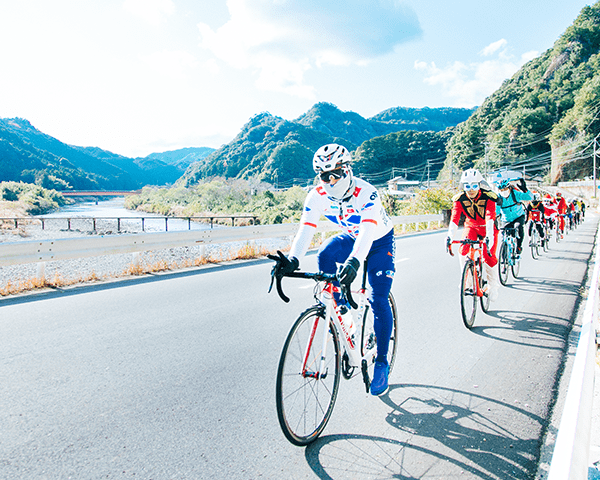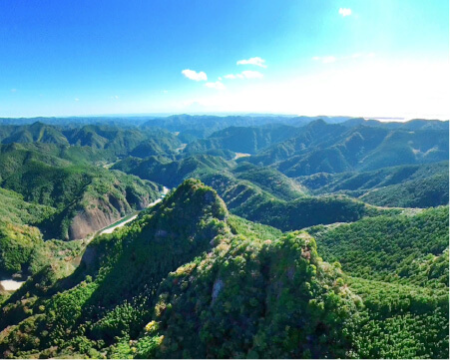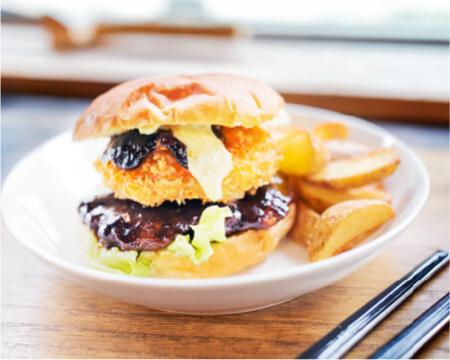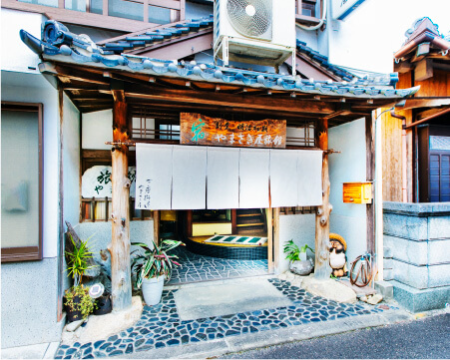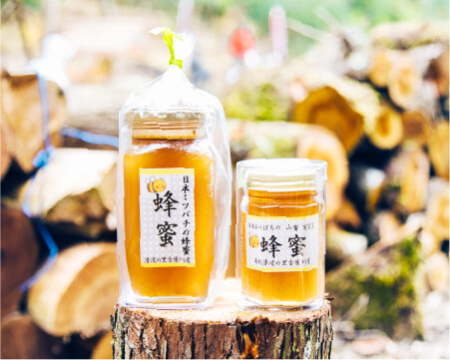Welcome to Kozagawa Town
About Kozagawa
In the southern part of Kii Peninsula, Kozagawa River runs through Kozagawa Town down to Kumano Gulf in Kushimoto Town. It is known for its crystal clear water and rich ecosystem, both in and around the river. The people in Kozagawa Town value and appreciate this beautiful river as their source of livelihood, transportation, and a place to relax and enjoy themselves.
The river changes its scenery by the four seasons. During spring, the blossoming of Sakura is beautifully seen, while during fall, the autumn leaves are turning colors and the Japanese pampas grass called “Susuki” is painting the riverbank. Obviously, the name of Kozagawa Town comes from this river, which has been loved by local people for hundreds of years.
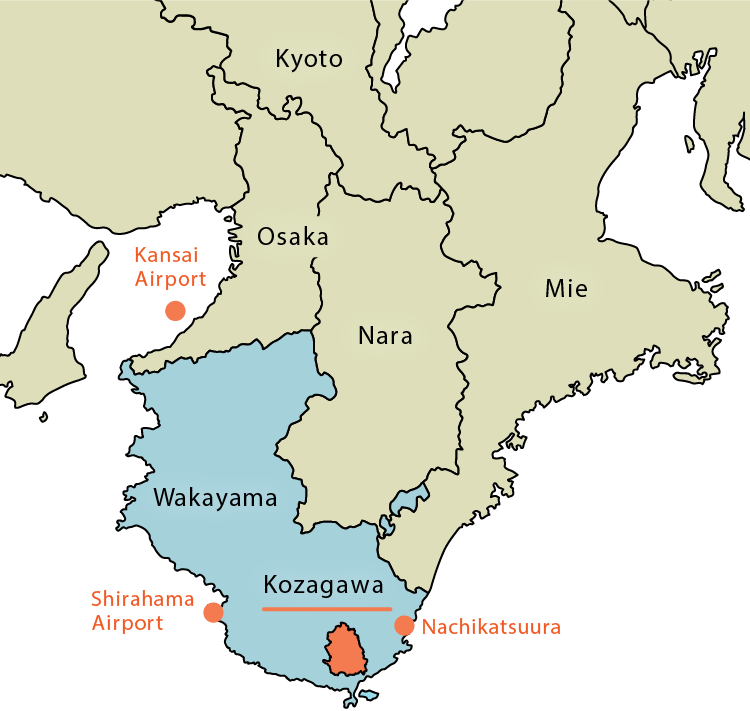
Come and explore Kozagawa Town
where beautiful nature still remains
from ancient times.

Culture and nature spots to visit
ICHIMAI-IWA
(NATIONAL NATURAL MONUMENT)
Ichimai-Iwa is one of the largest one-plate rock or “monolith” in Japan, standing 100 meters high and 500 meters wide. It was registered as National Natural monument on December 13, 1941. Ichimai-Iwa stands on the riverside of the beautiful Kozagawa river, whose view is just outstanding among the other scenery in this area.
“Ichimai” means “one plate” while “Iwa” means “rock” in Japanese. This large rock was formed from tremendous volcanic activity, which attracts campers in summer and photographers in spring and autumn.
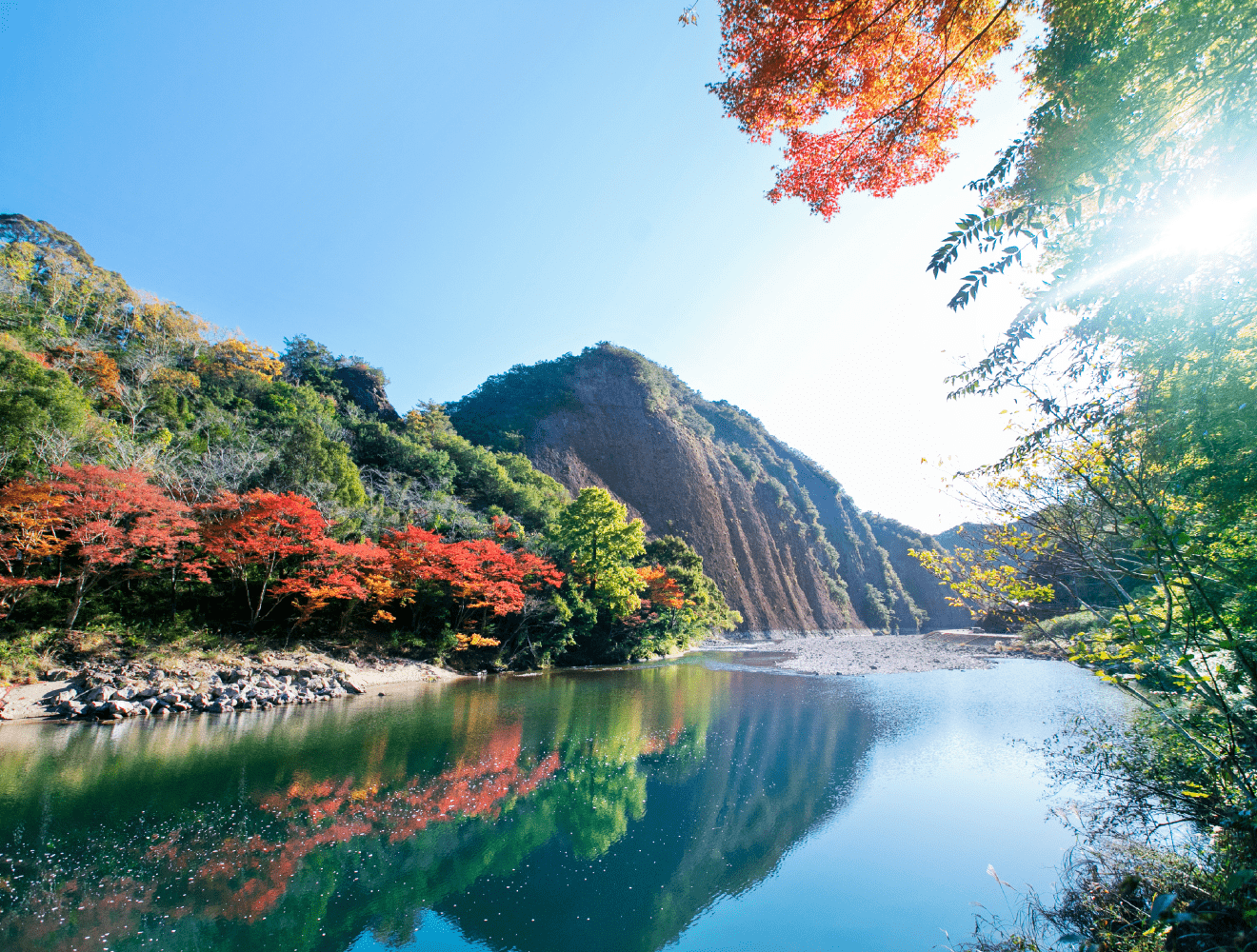

Folktale: The Guard Dog of Ichimai-Iwa
The Guard Dog of Ichimai-iwa is one of the most famous folktales in Kozagawa Town. According to the town residents, every year on April 19th and August 25th, a shadow in the shape of a dog appears on Ichimai-Iwa. So, what is the story behind the shadow that appears on the monolith?
“Once upon a time, a demon lived in Taiji Town, next to Kozagawa Town. He loved to eat rocks. But when he ate up all the rocks in Taiji, he decided to move to Kozagawa and started to eat the rocks one after another. One day, when he was about to bite Ichimai-Iwa, a village dog jumped up and attacked the demon.
The demon, who hates dogs the most in the world, ran away and never came back. There is a dent that runs along the middle of Ichimai-iwa, which is believed to be the tooth mark of the demon. A stream of water appears on the rock when it rains, and the locals believe it is the demon's tears of regret.
TAKINOHAI
(NATIONAL NATURAL MONUMENT)
Takinohai is an iconic waterfall in a branch of Kozagawa River. Its riverbed is all made from rocks, and there are numerous unique holes in it. Every summer, fishermen gather in this area because a large number of sweetfish (also called ayu) migrate to the waterfall basin during this time.
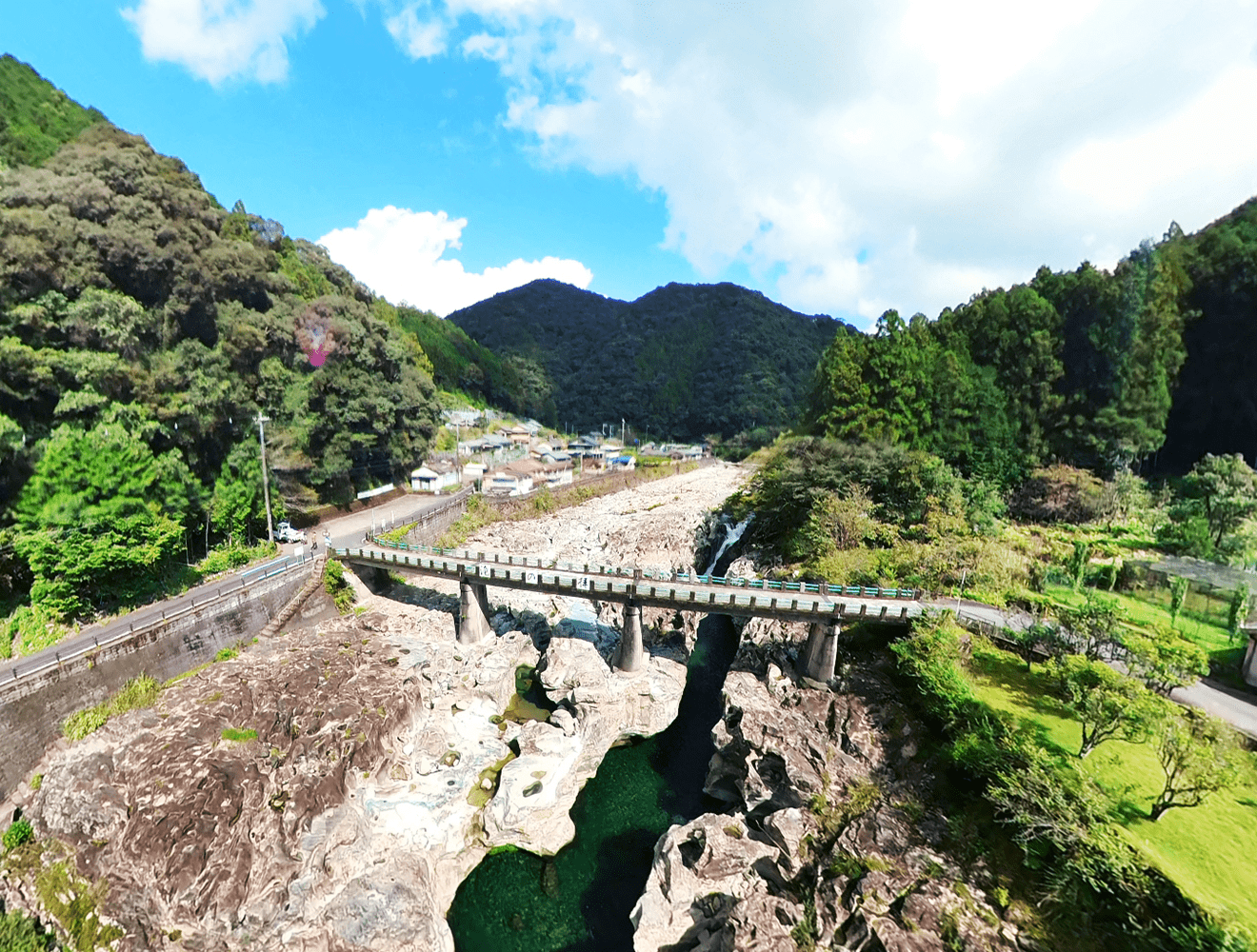
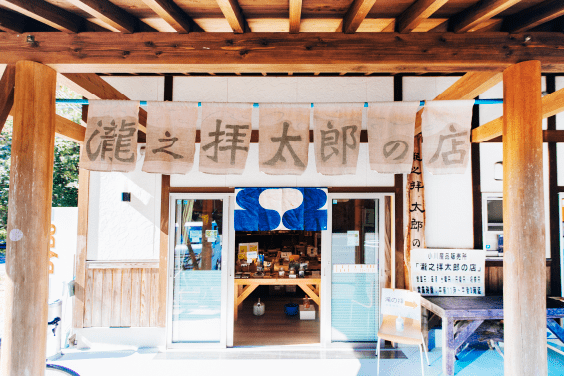
Takinohai Taro
Takinohai Taro is a roadside station adjacent to the natural monument Takinohai mentioned above. There is an information corner that displays tourist information around Takinohai, a product sales space that sells special sovenirs and crafts of Kozagawa Town, and also an outdoor rest space called Azumaya.
MUSHIKUI-IWA
(NATIONAL NATURAL MONUMENT)
Mushikui-Iwa is a nationally designated natural monument located in the Ikenoyama area of Kozagawa Town. One part of the Kozagawa arc-shaped dike, which is the underground part of Kumano Caldera (approximately 15 million years ago) is a natural sculpture created by weathering and erosion. There are countless holes all over the rock that have been eroded by the wind and rain,and they look as if being eaten by insects. The rock has been selected as one of the 100 Geological Sites in Japan.
There is a legend that if you make a wish by threading a pebble with a hole in it, your ear disease will be cured. There are a lot of pebbles that can be seen in the Kannon-Do, which is enshrined in the Mushikui-Iwa as if to confirm that the tale is real.
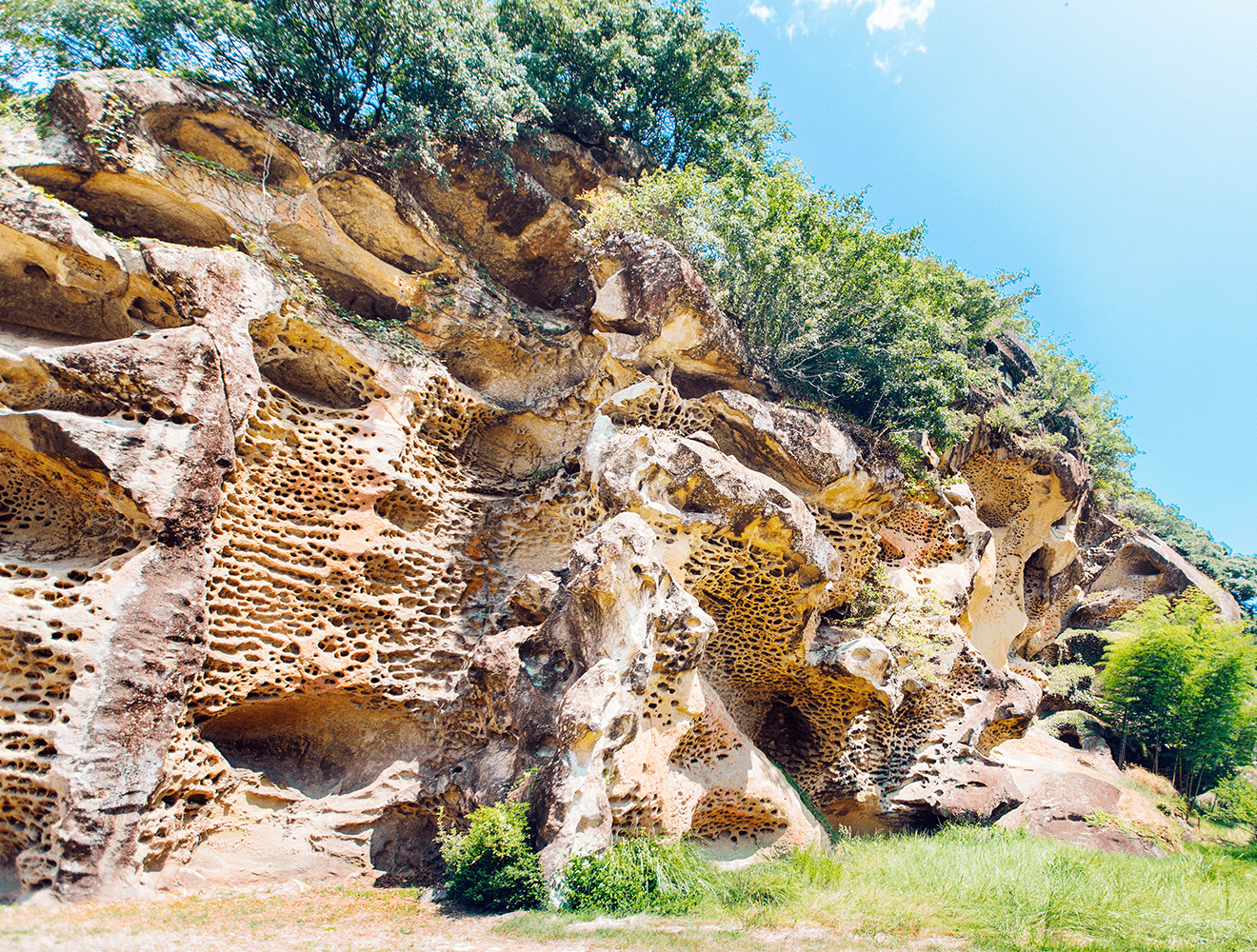
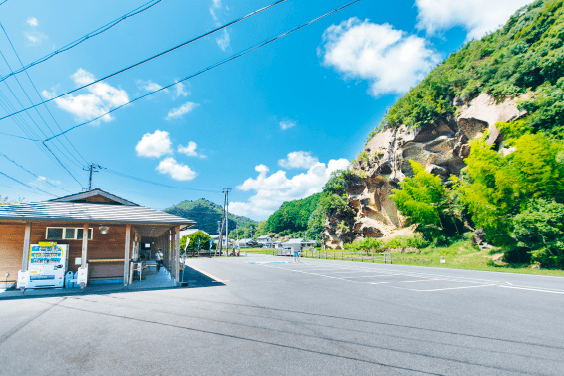
Mushikui-Iwa Roadside Station
Mushikui-Iwa Roadside Station is located right in front of Mushikui-Iwa, which has a restroom,a parking lot,and a shop selling special local products.
Tourists and locals can buy Yuzu (a Japanese citrus fruit, and its juice is often infused into liquor, and sometimes made into marmalade or jam) and Jibie (a Japanese wild game cuisine that uses the meat of hunted deer or boar as ingredients), and other Kozagawa Town specialties at the roadside station's shop. It also sells drinks such as coffee,and you can enjoy them at the eat-in area in the shop.
MYOJIN SUBMERSIBLE BRIDGE
The height is lowered to prevent the bridge from collapsing due to driftwood by hiding under the water when the river rises. Also, it is designed without handrails to reduce water resistance. It is the bridge that coexists with Kozagawa, where there is a lot of flooding.

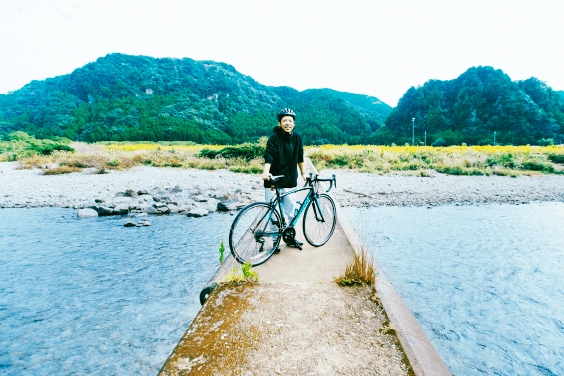
Famous as a cycling spot
When cycling in Kozagawa Town, the Myojin Submersible Bridge is also recommended as a scenic place to visit. Cyclists regularly stop by because it is on the way to Kushimoto Town and Ichimai-Iwa.
KOUCHI FESTIVAL
Kouchi Festival is a traditional event that has been held by the five districts of Kozagawa area. This is the unique type of festival in which five areas with different personalities gather once a year at Kouchi Shrine (or Kouchi-sama) and they each hold a festival in their own way. The highlight of the festival is the appearance of three boats on the water that looked like warships by decorating the ancient whaling boats in Koza that flourished in whaling in the Edo period.
The deity of Kouchi Shrine is enshrined at Koza Shrine in Kawaguchi. However, the boats that put up their sanctuary tablet goes up to a small island which is called "Koottama," in the river, which was originally enshrined about 3 kilometers upstream, and that is the main festival site.
It is also a festival with many things to see, such as the boat race and the old-fashioned shishimai act (a dance performed in a lion's mask), which is said to be the root of the shishimai in the Kumano region.
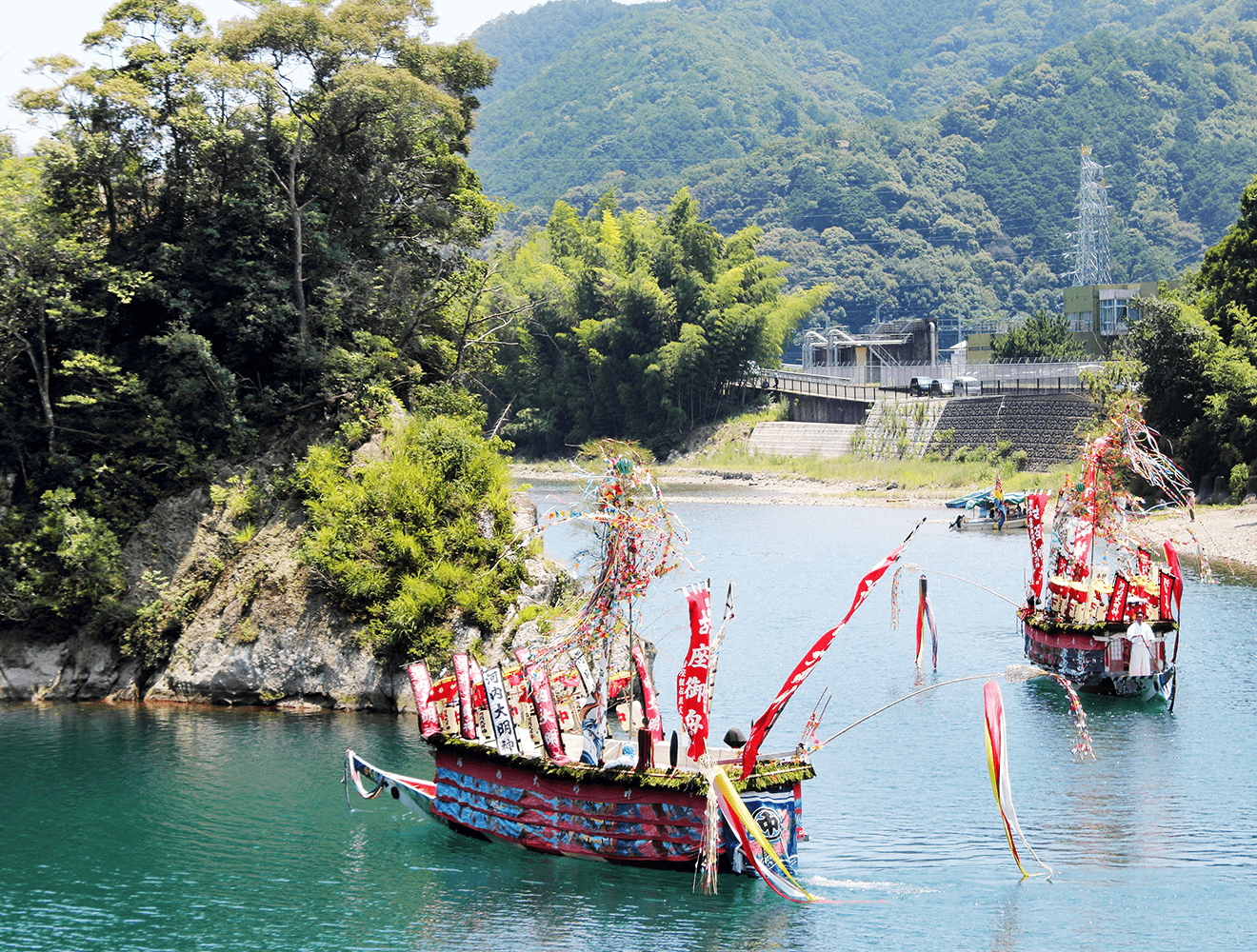
Movie
You can experience sightseeing in
Kozagawa Town with 360° VR video.
Map
Train
-
From Osaka,Kyoto

-
From Nagoya,Mie

Plane
-
From Osaka,Kyoto
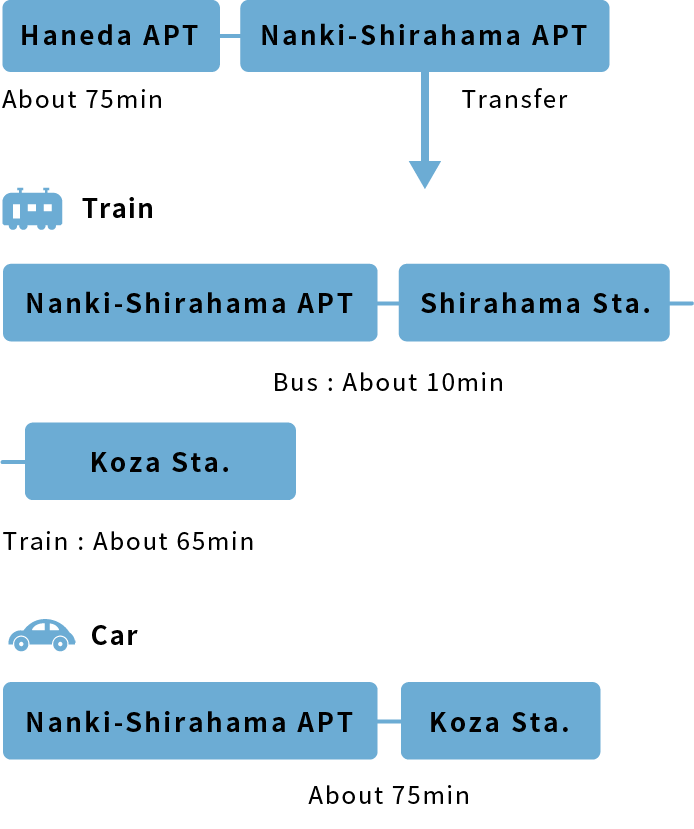
-
From Kansai Airport
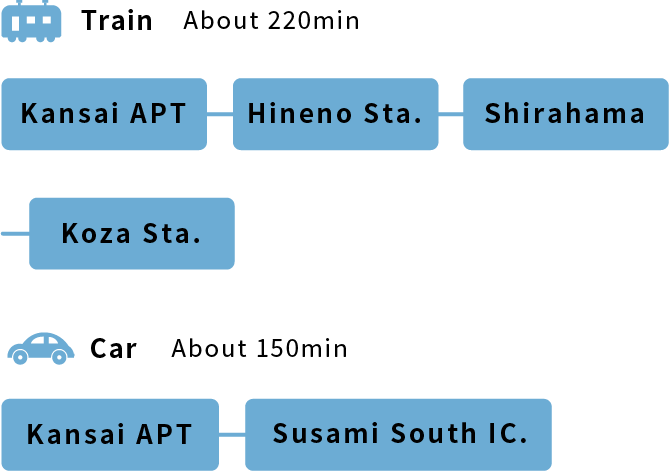
Car
-
From Osaka,Kyoto

-
From Nagoya,Mie
